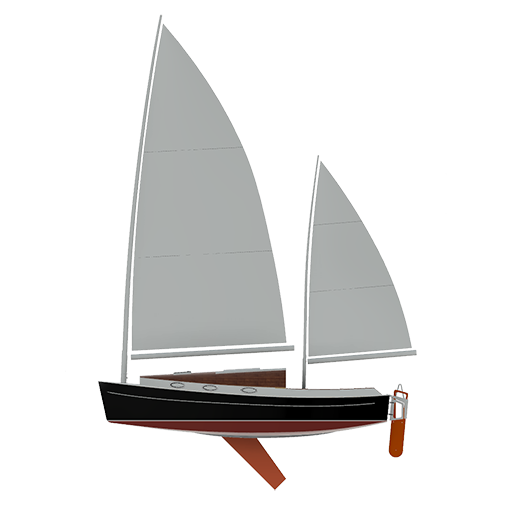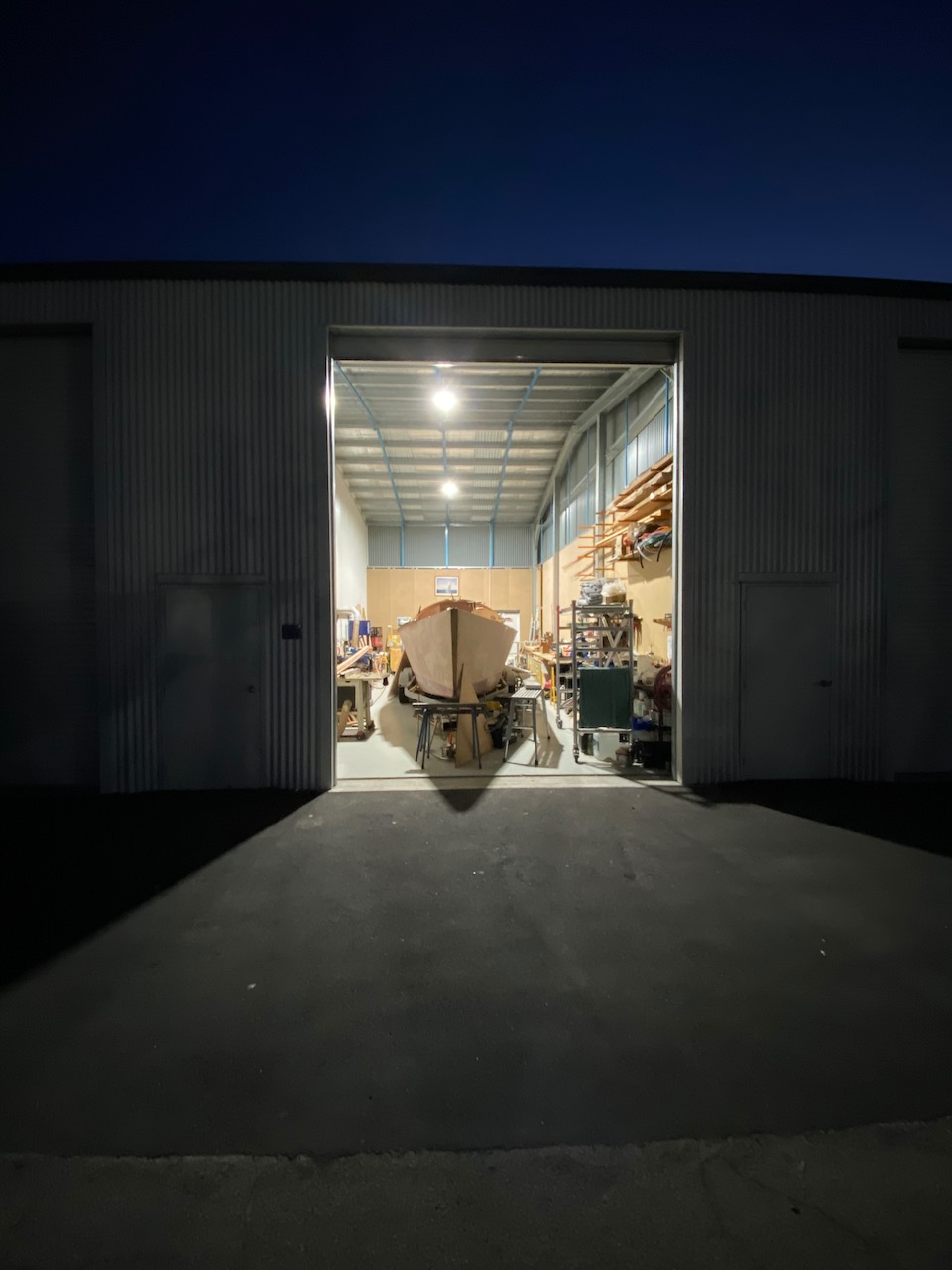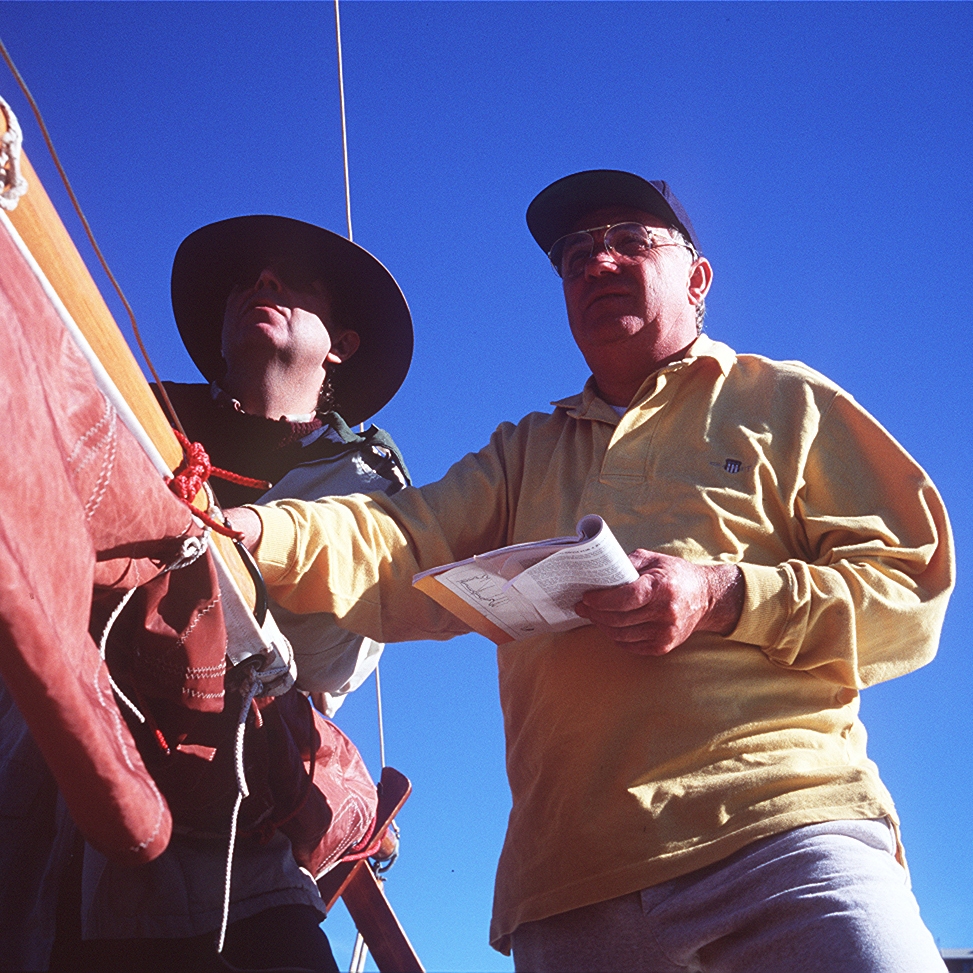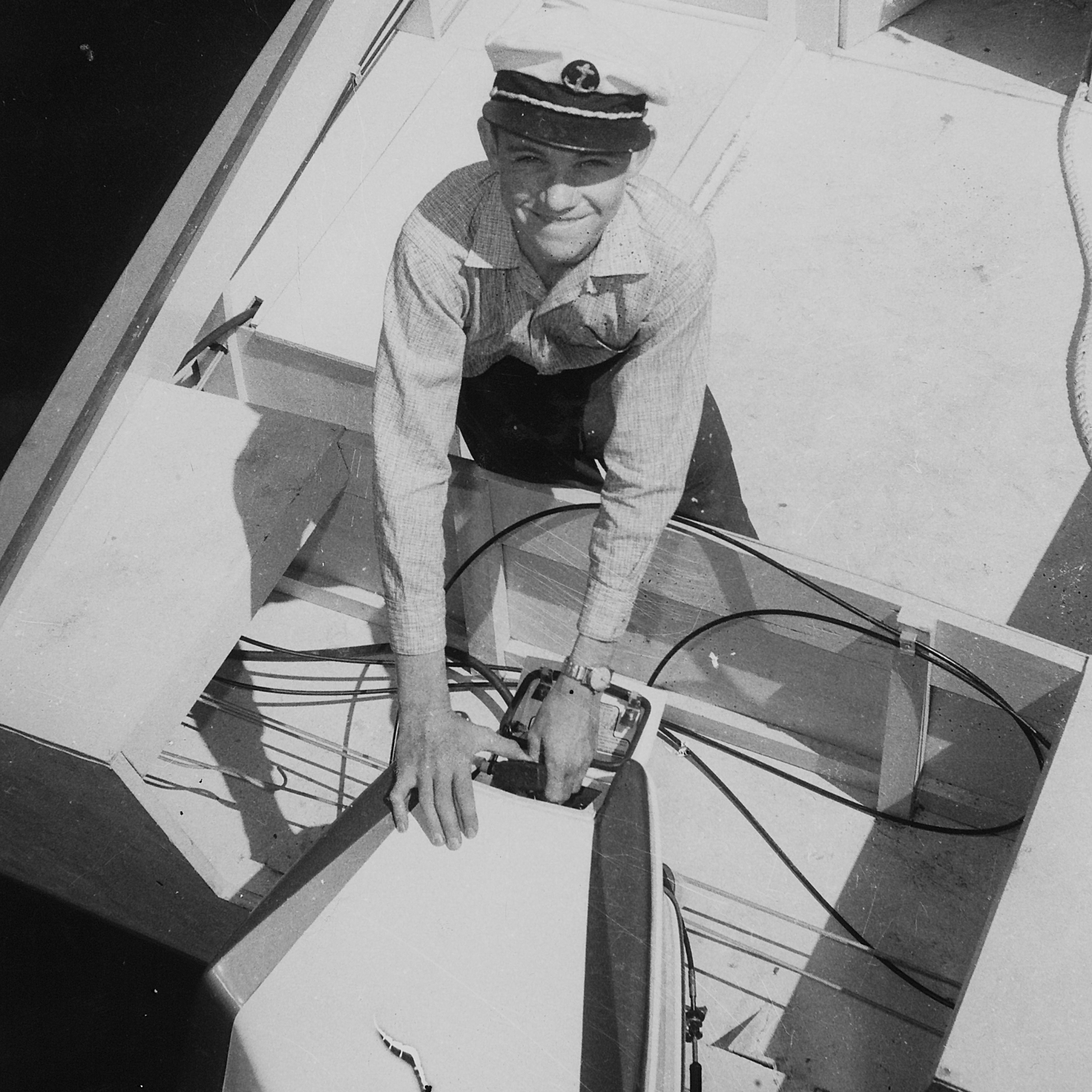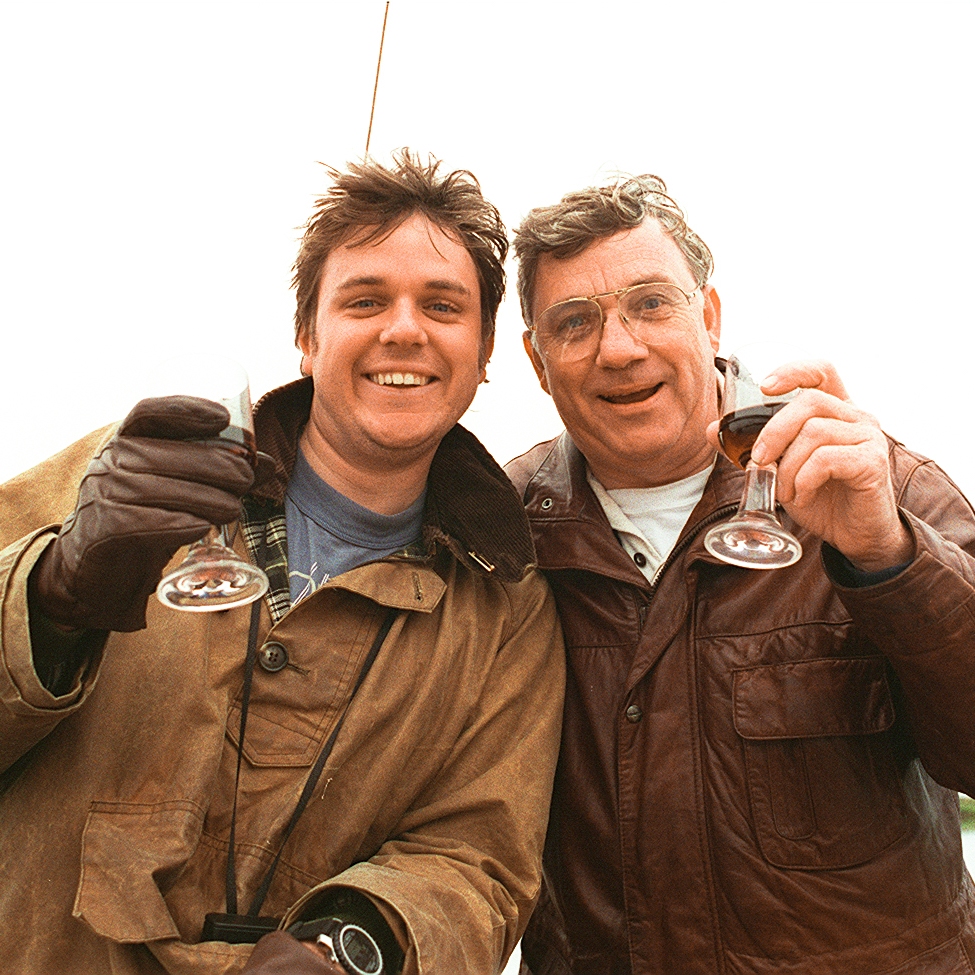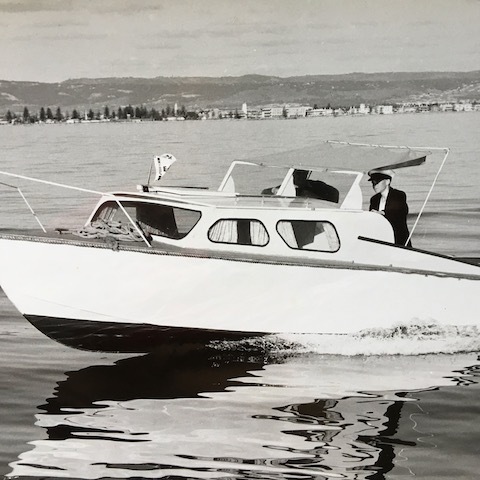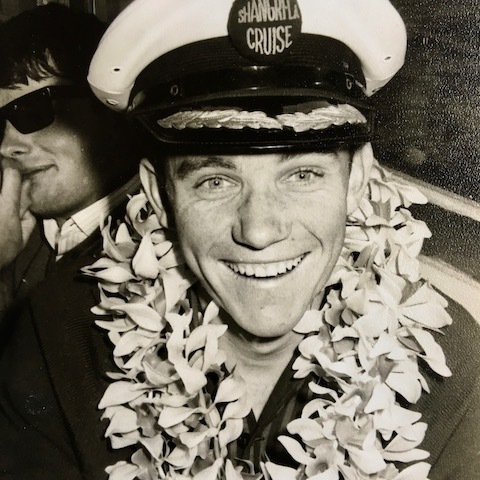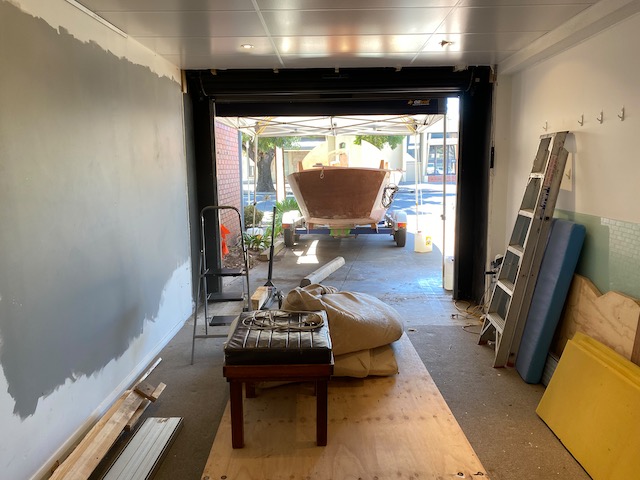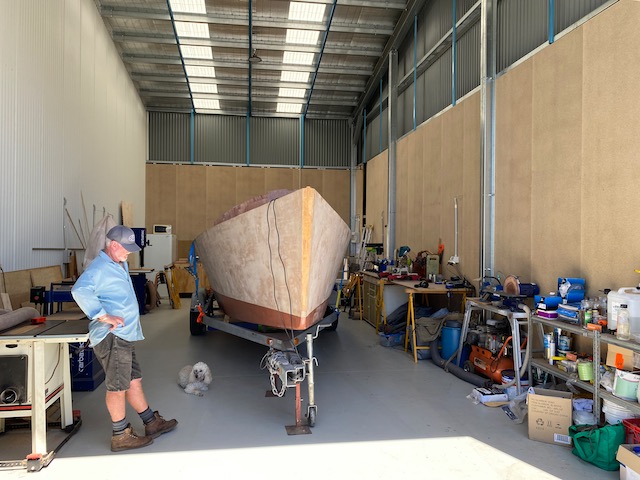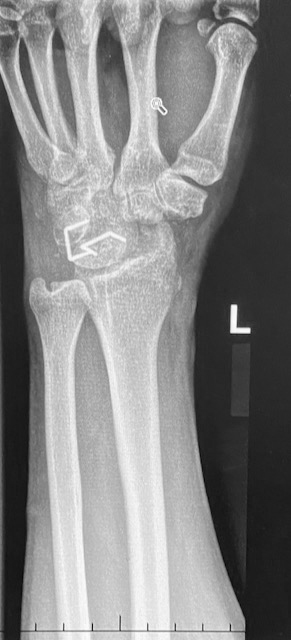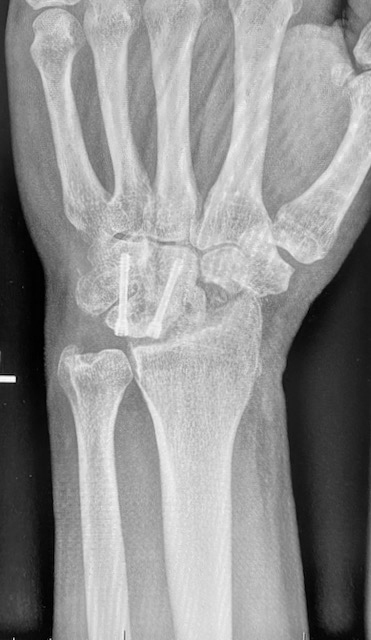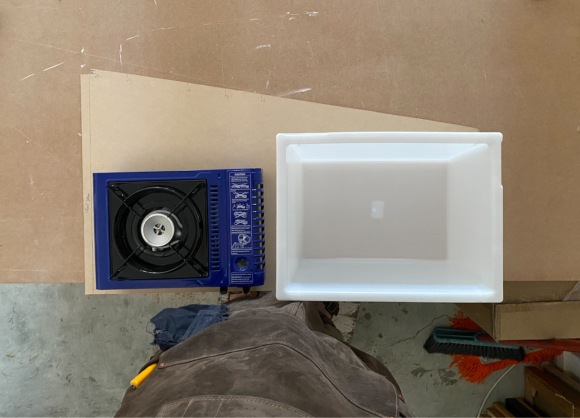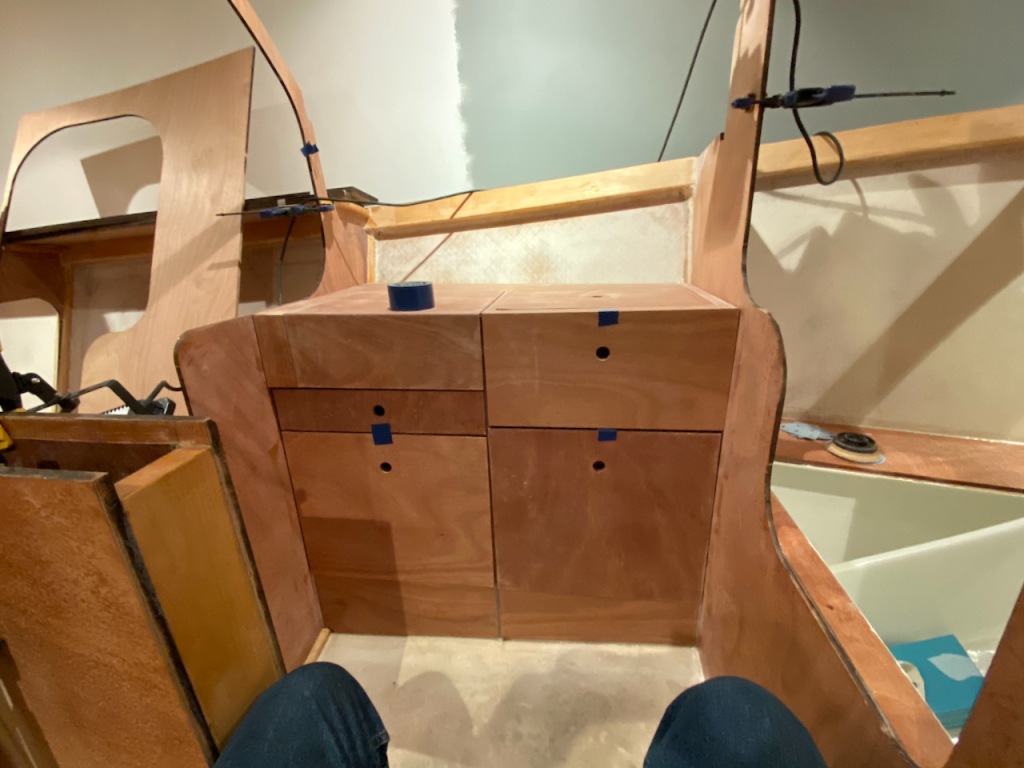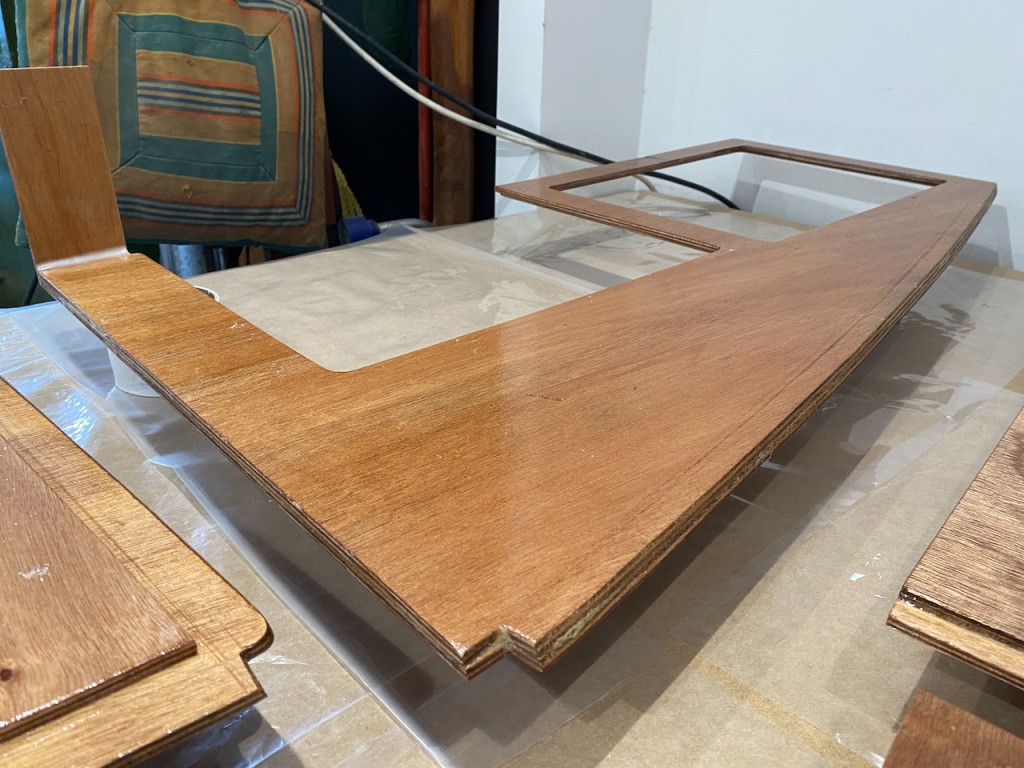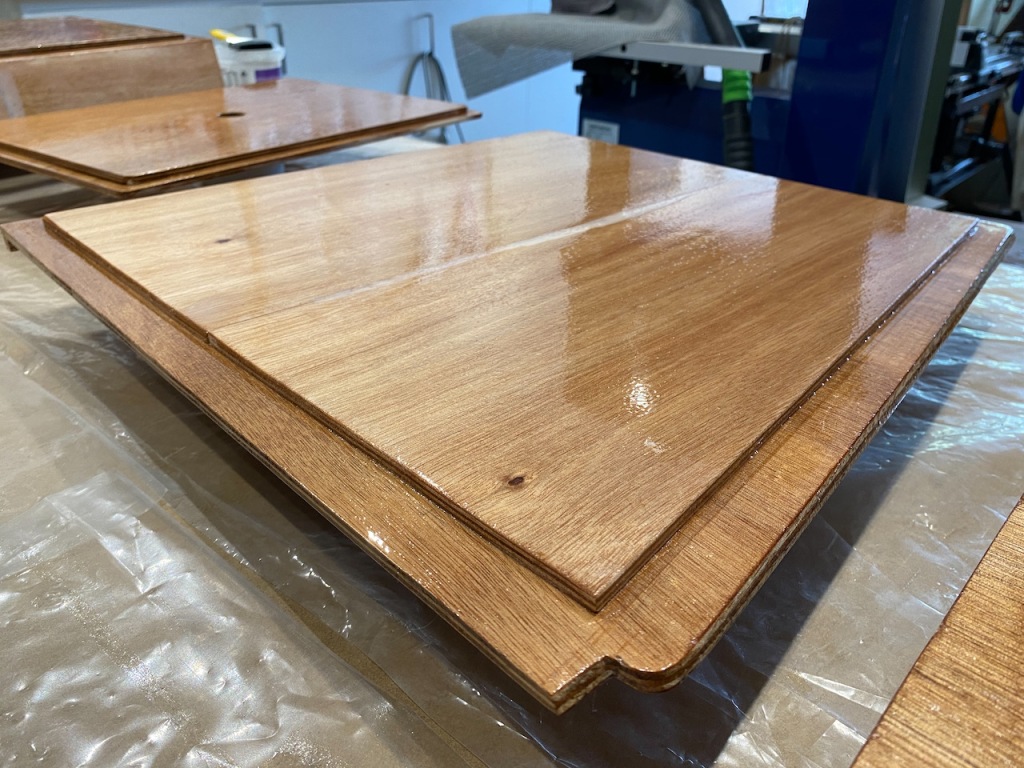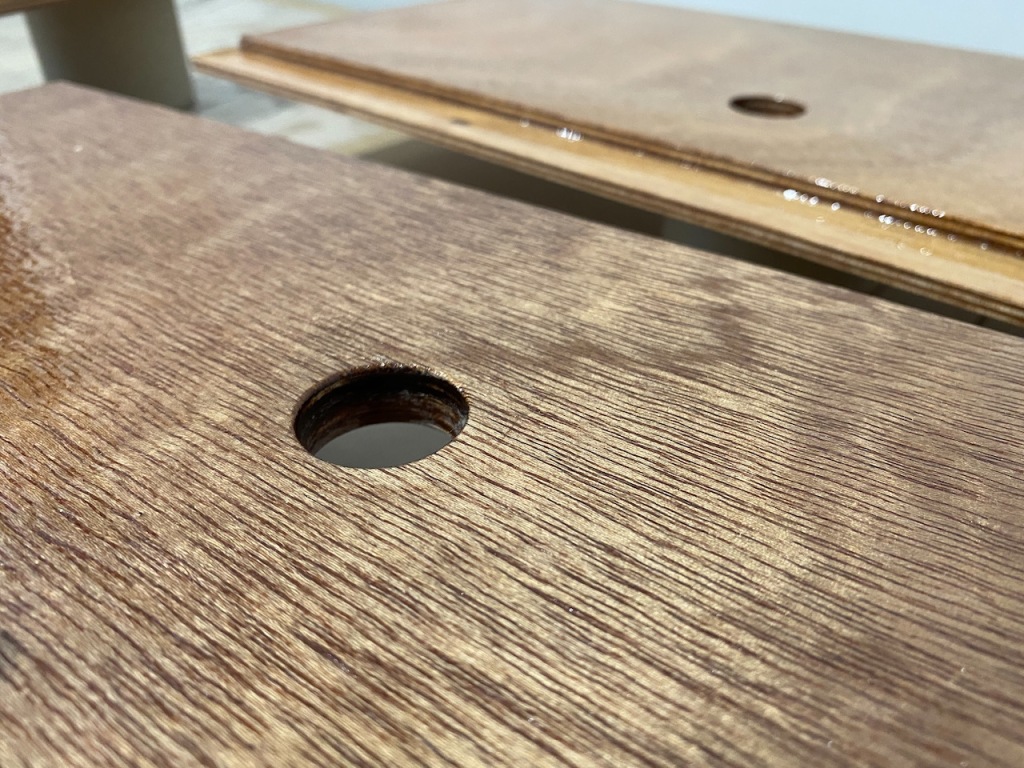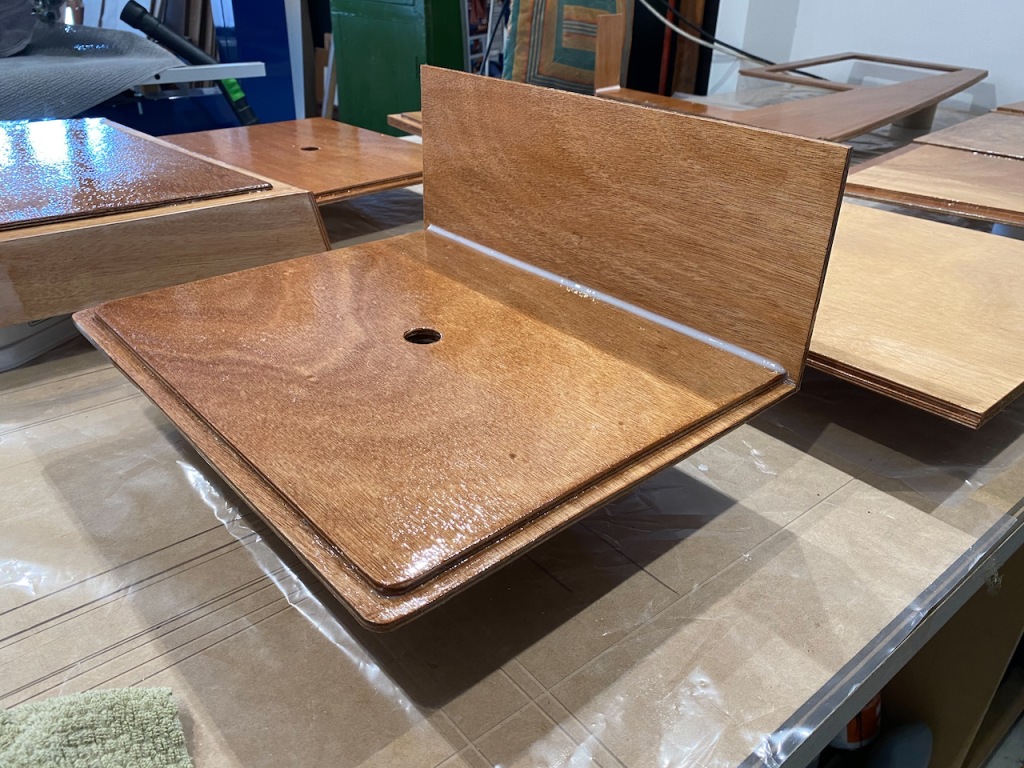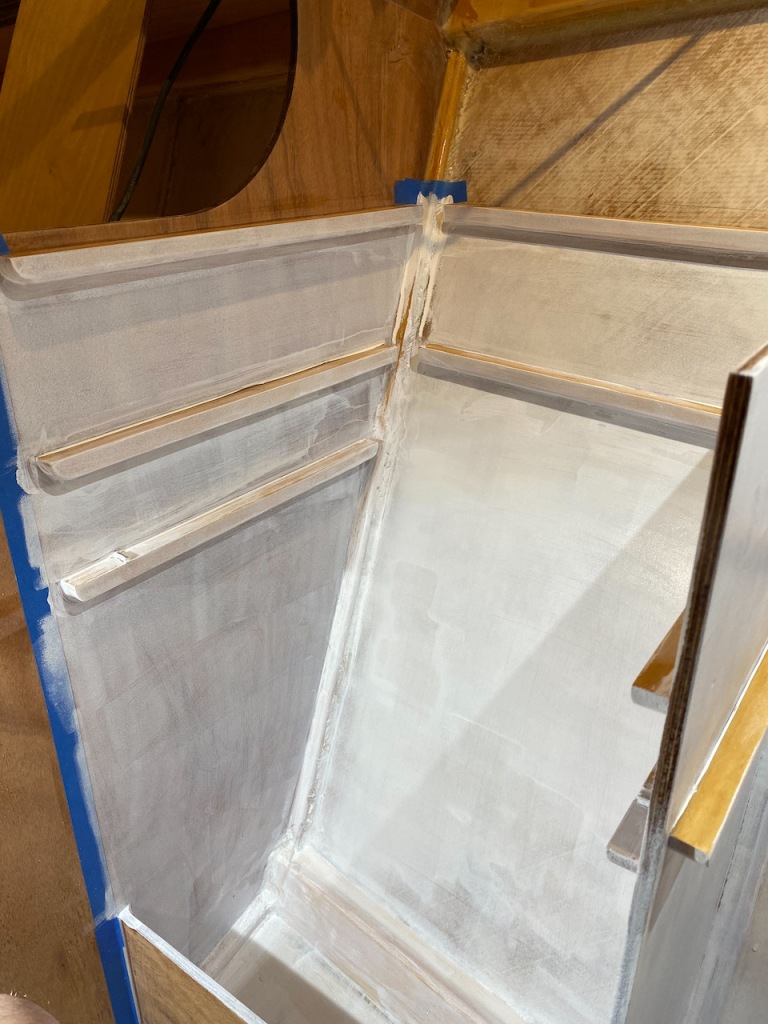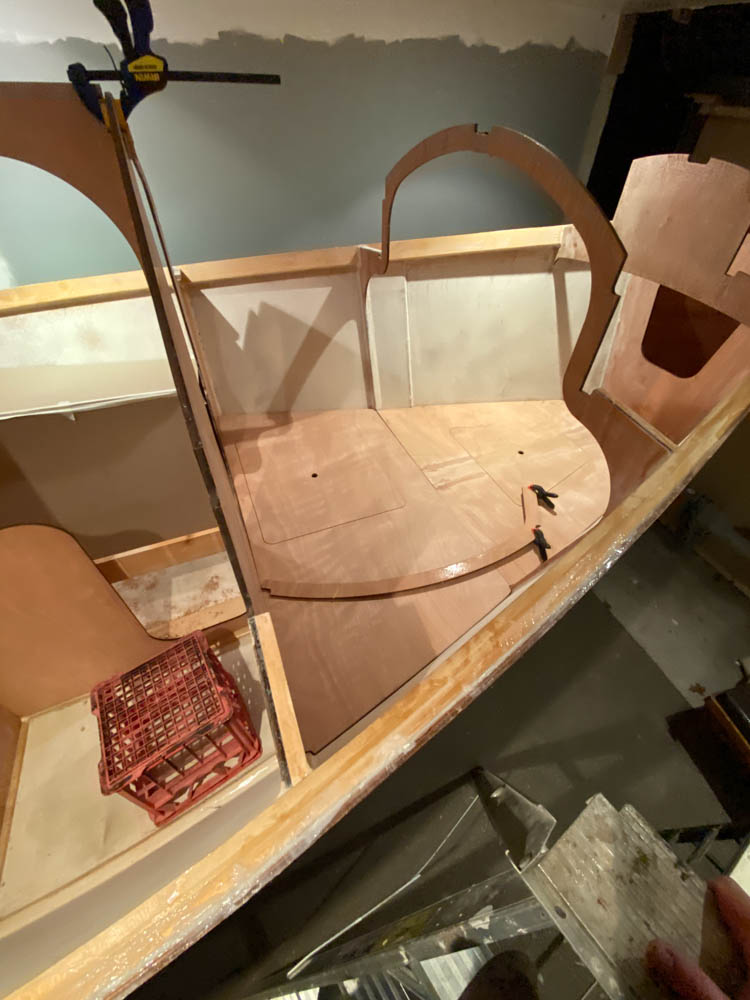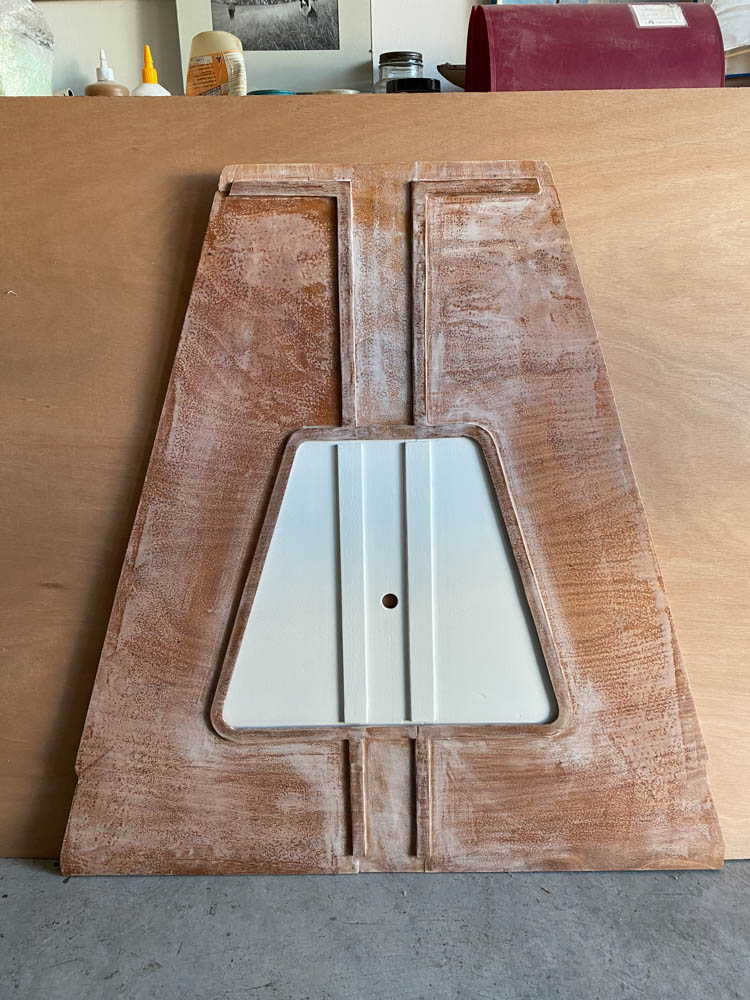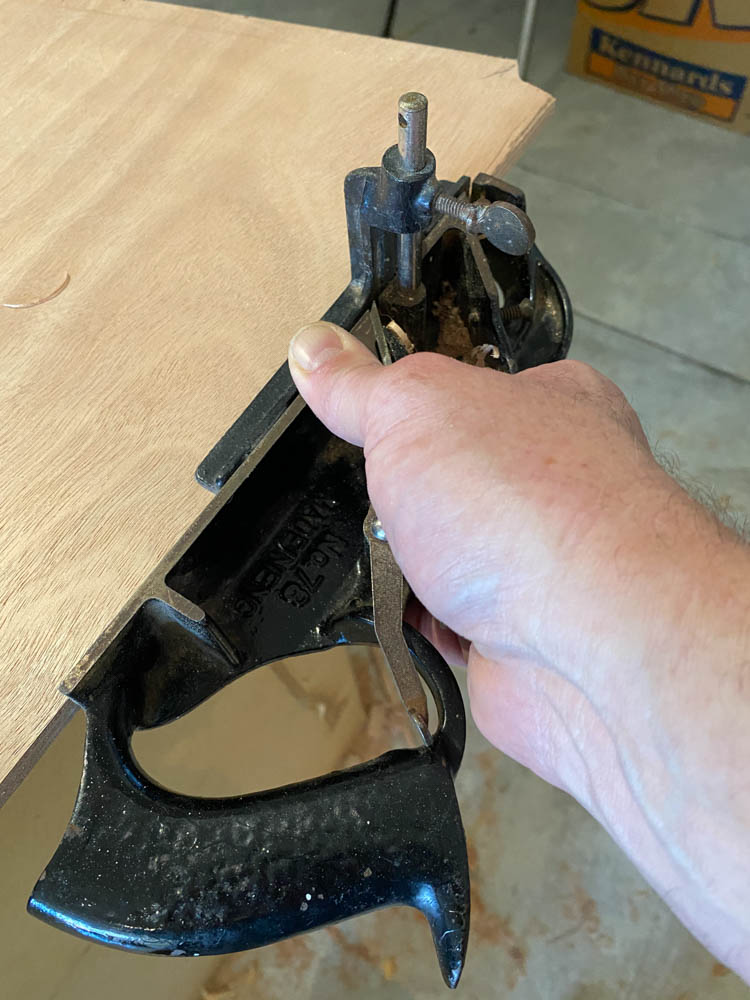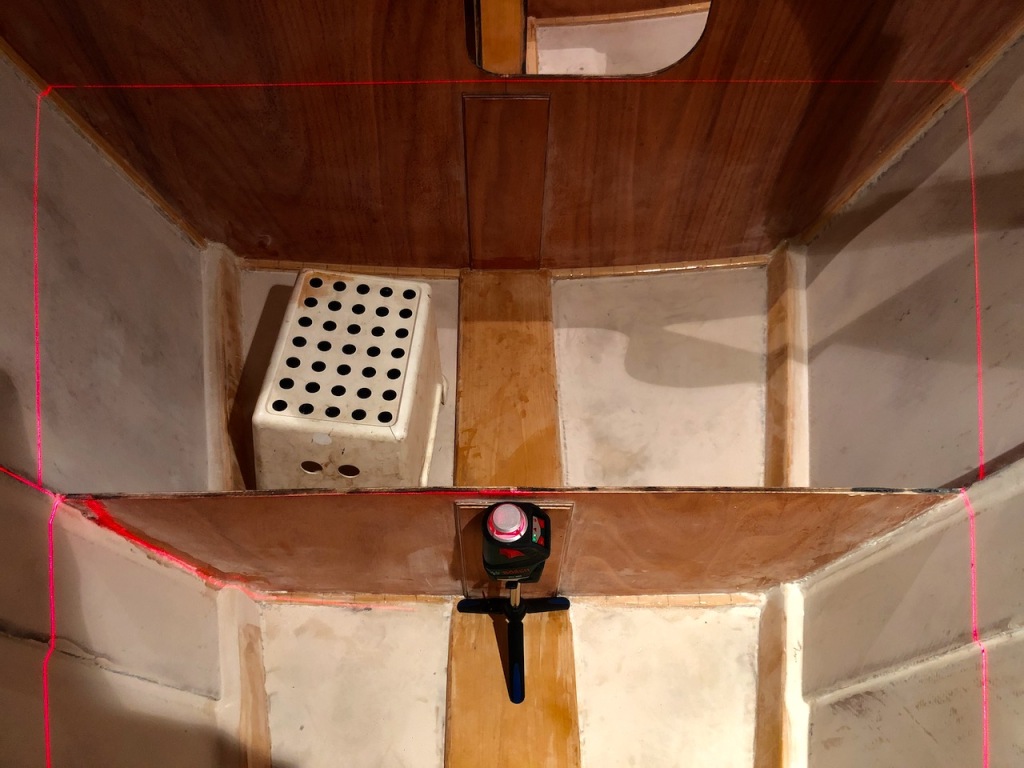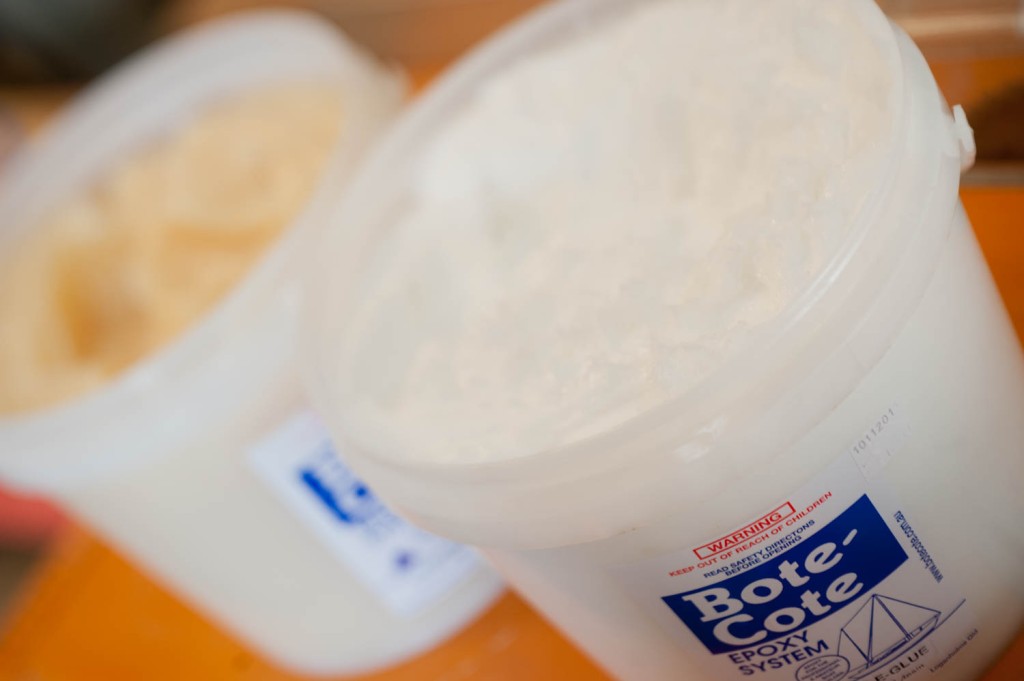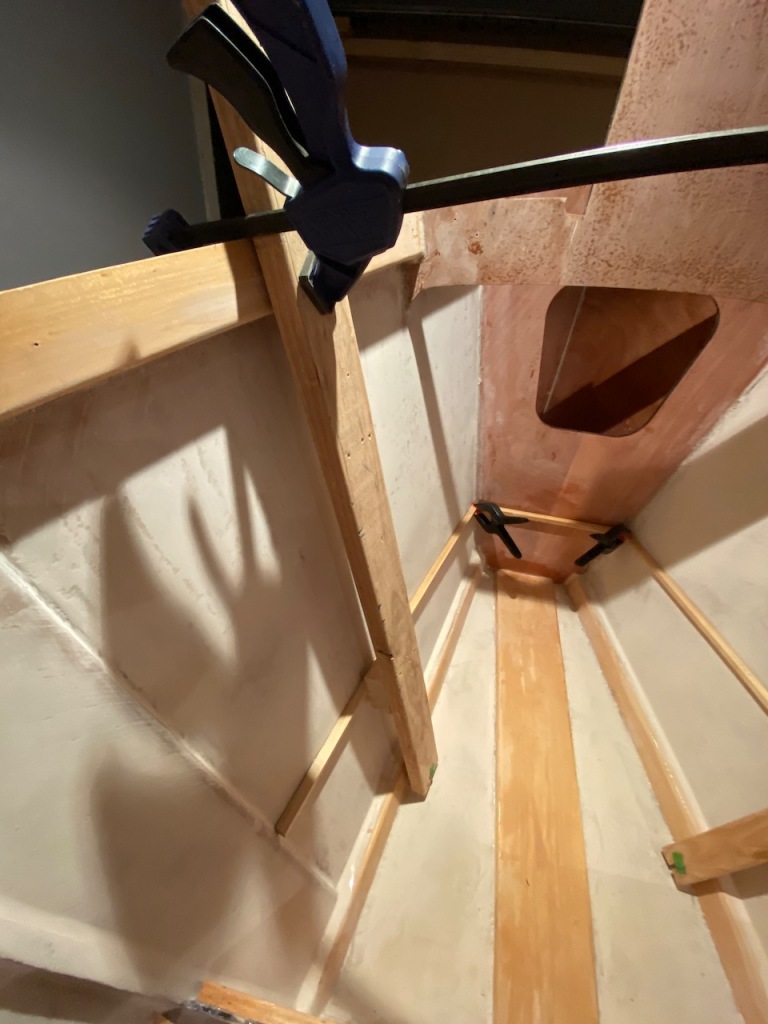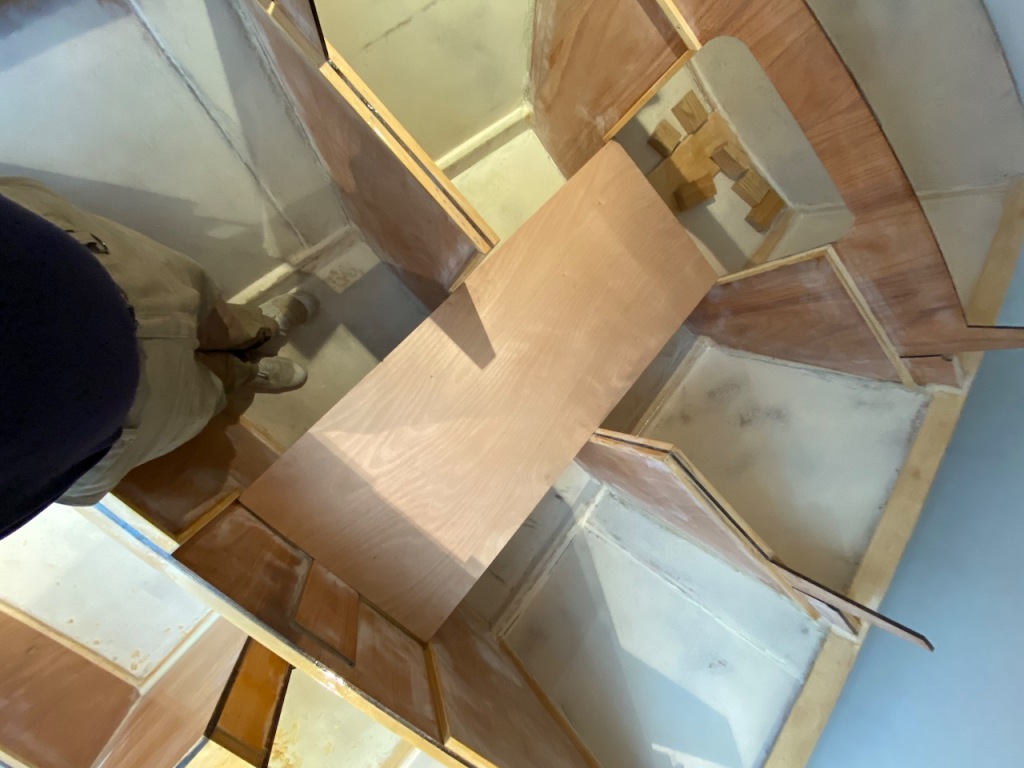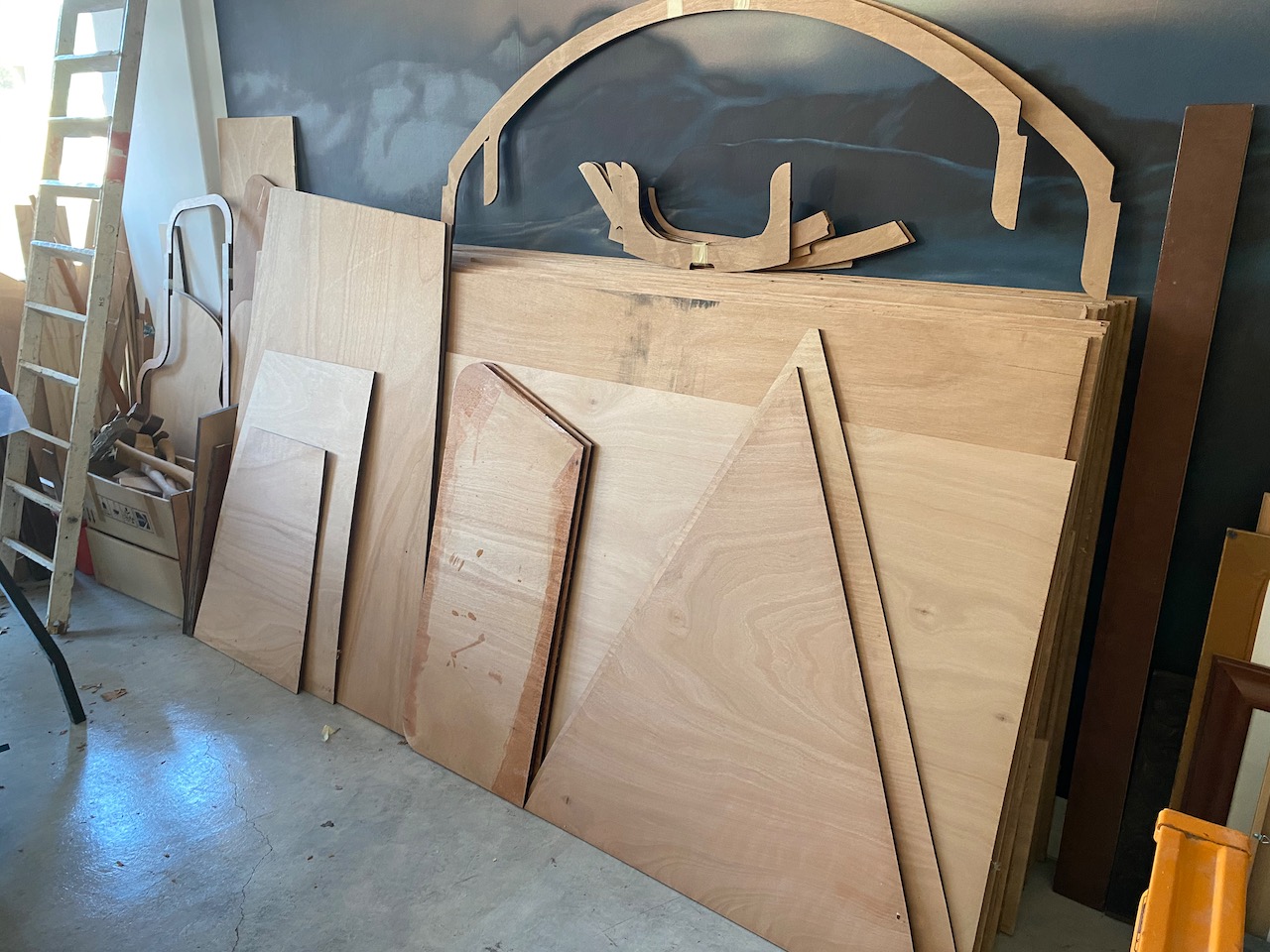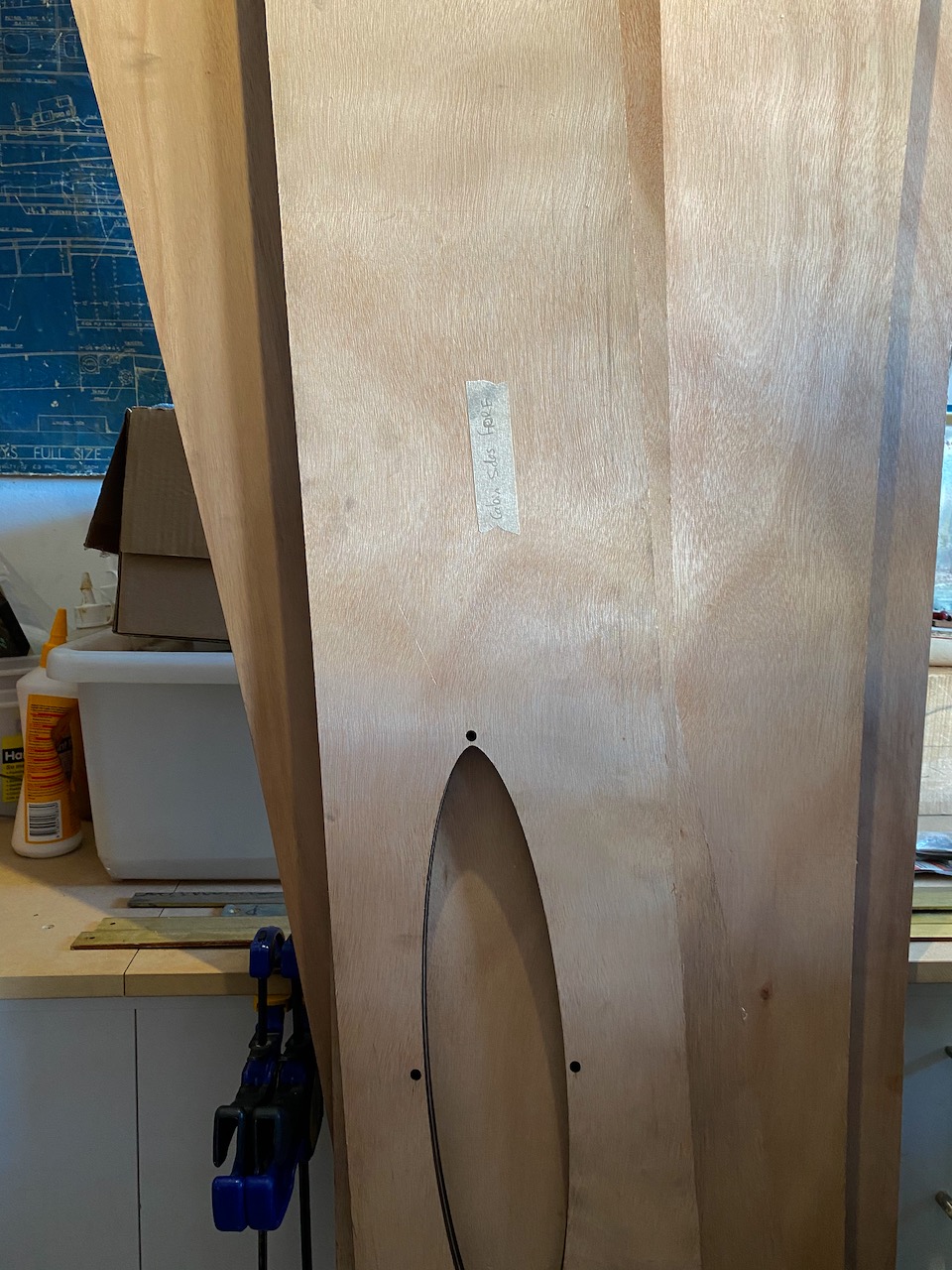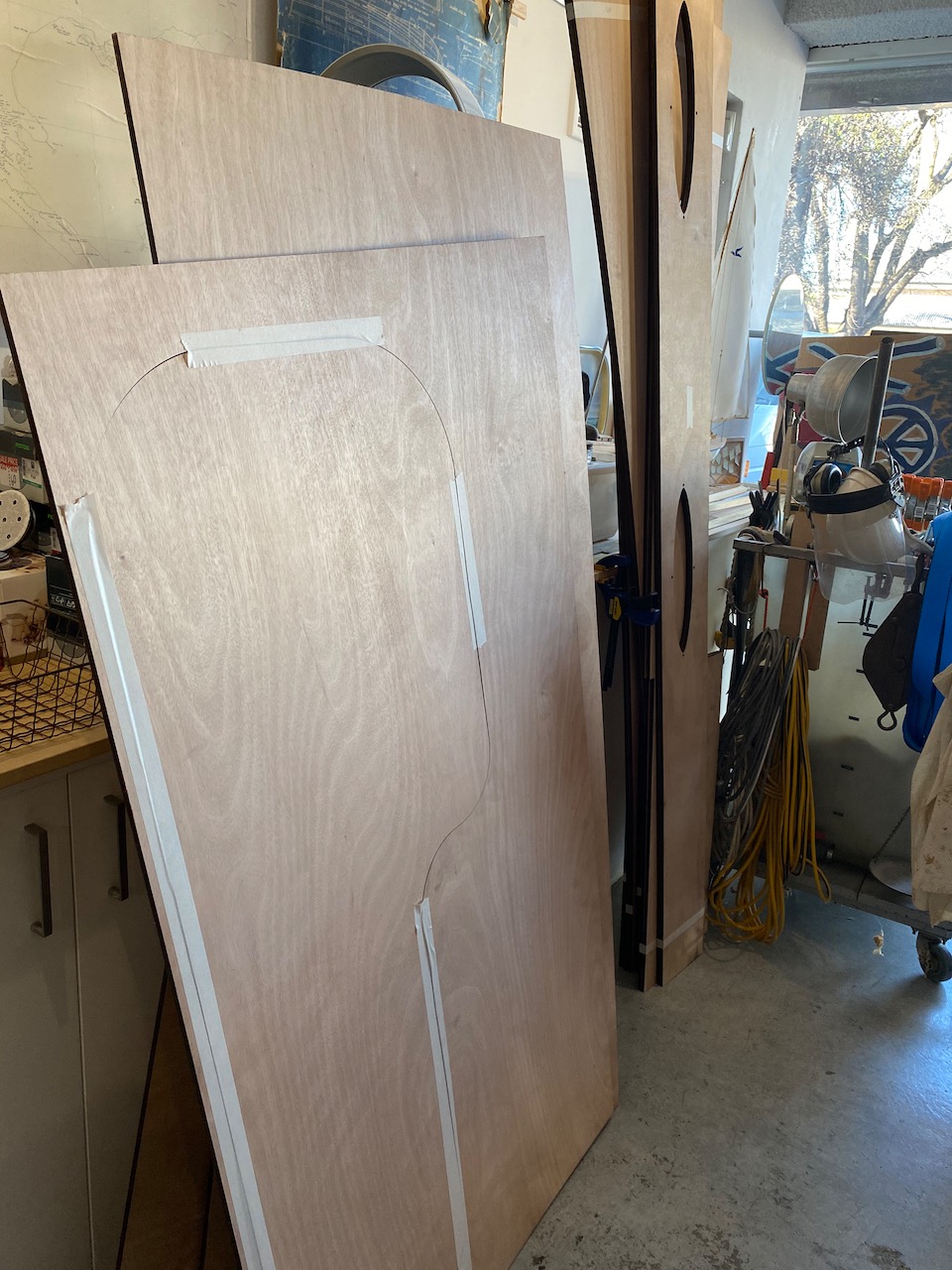Those of you with children older than 5, do you remember those first off-to-school days? Do you remember how you felt letting them go? They are still your children, but someone else is now messing with them.
Worry. This is my default position. I worried about both of my daughters and their disembarkation from the mother ship. They are now 18 and 19, and while that gangplank is verrrry long, that same worry is still there. Or at least has been replaced by some other tantalising concern .
This is how it has been over this year as my beloved Sharpie has been in the hands of Troy Lawrence of Adelaide Timber Boatworks.
Troy kindly stored my Sharpie until he and his crew could get clear of their work on the South Australian training vessel One and All. This meant I had storage for much of the first part of the year, and a promise of progress to come.
Troy and his team jumped into puzzling out the motor well. It is a puzzle because each motor has slightly different dimensions and the available space is limited. It must be neat, out of the way and function well.
Cutting that hole in your own hull is anxiety inducing. I am sure it has stolen good progress and sleep! But in the hands of another, and that other is a professional with a can-do attitude, it just happened.
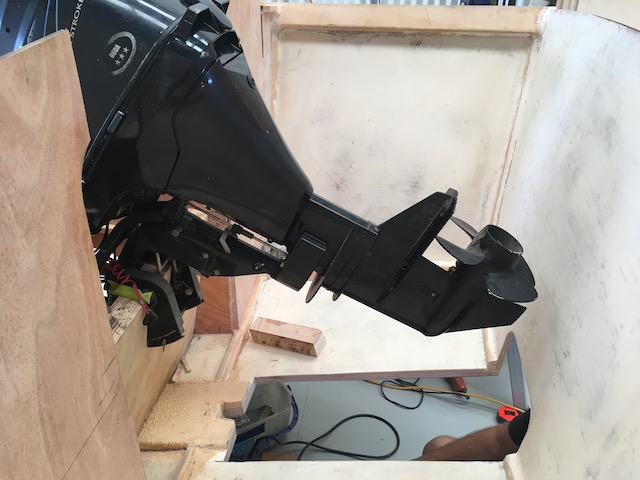
It reminded me of a time building my Whilly Boat when I needed to cut the centreboard slot in the keelson. I must have stared at it for weeks. Then one day, another builder in the shared space who was sick of my faffing, grabbed a 12″ circular saw, mounted the up-turned hull and plunge-cut the slot in minutes. I was swept away with his daring-do.
I learned nothing, I still measure fifty three times before cutting.
So yet again, a hole is cut for me. And following on from this bravery, the motor mount is perfectly angled and epoxied in, the cheeks either side of the slot are heavily glassed, the fuel tank lockers are sized and set up and the cockpit sole is in…wow.
Troy is working to what I can afford, so the progress is not blitzkrieg, but is solid progress. I go down most Fridays and the odd Saturday to potter on the internals, making my own kind of headway, more like Slocum trying to get through the Strait of Magellan.

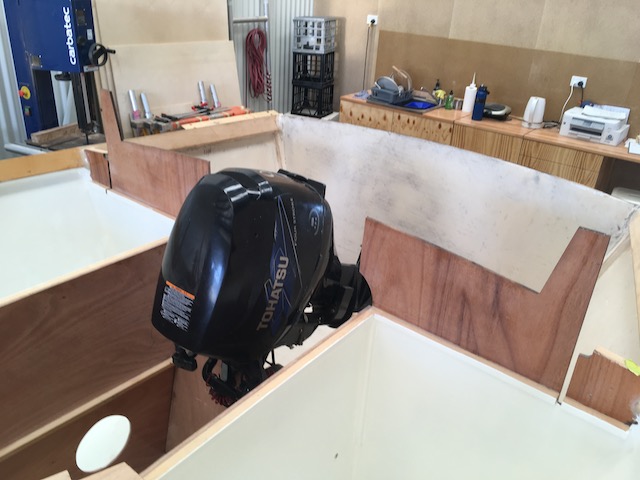
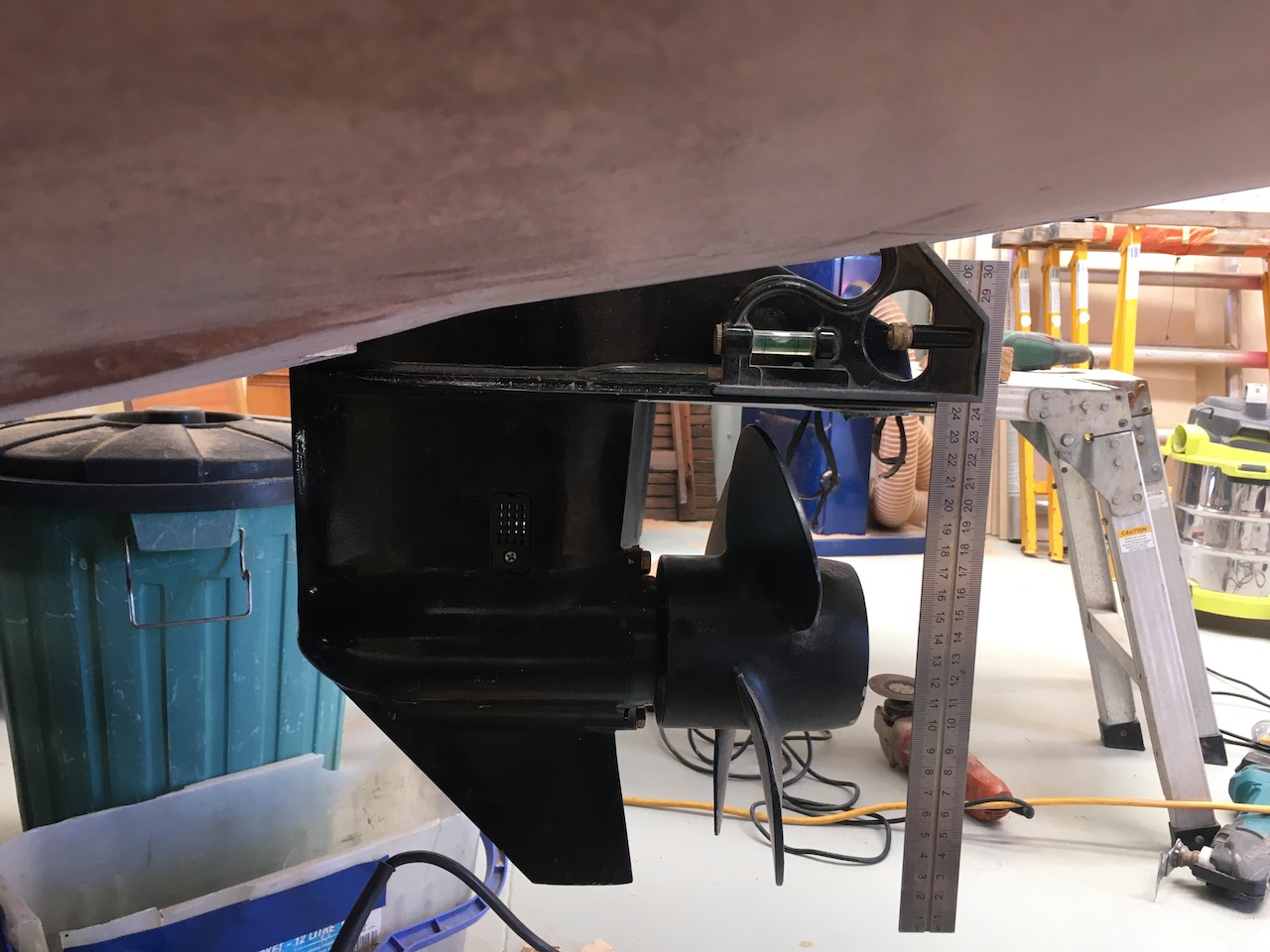
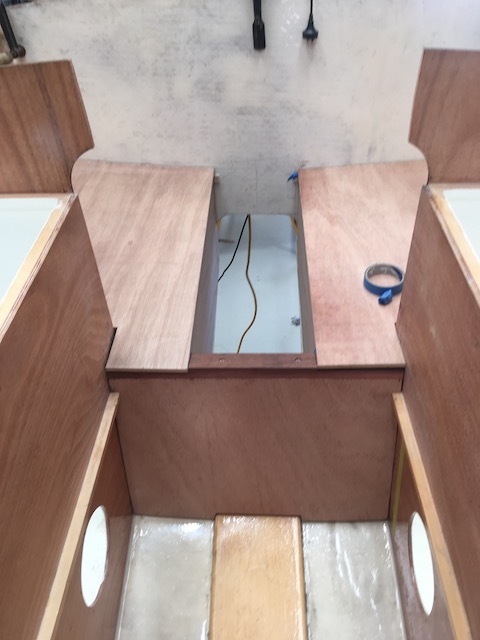
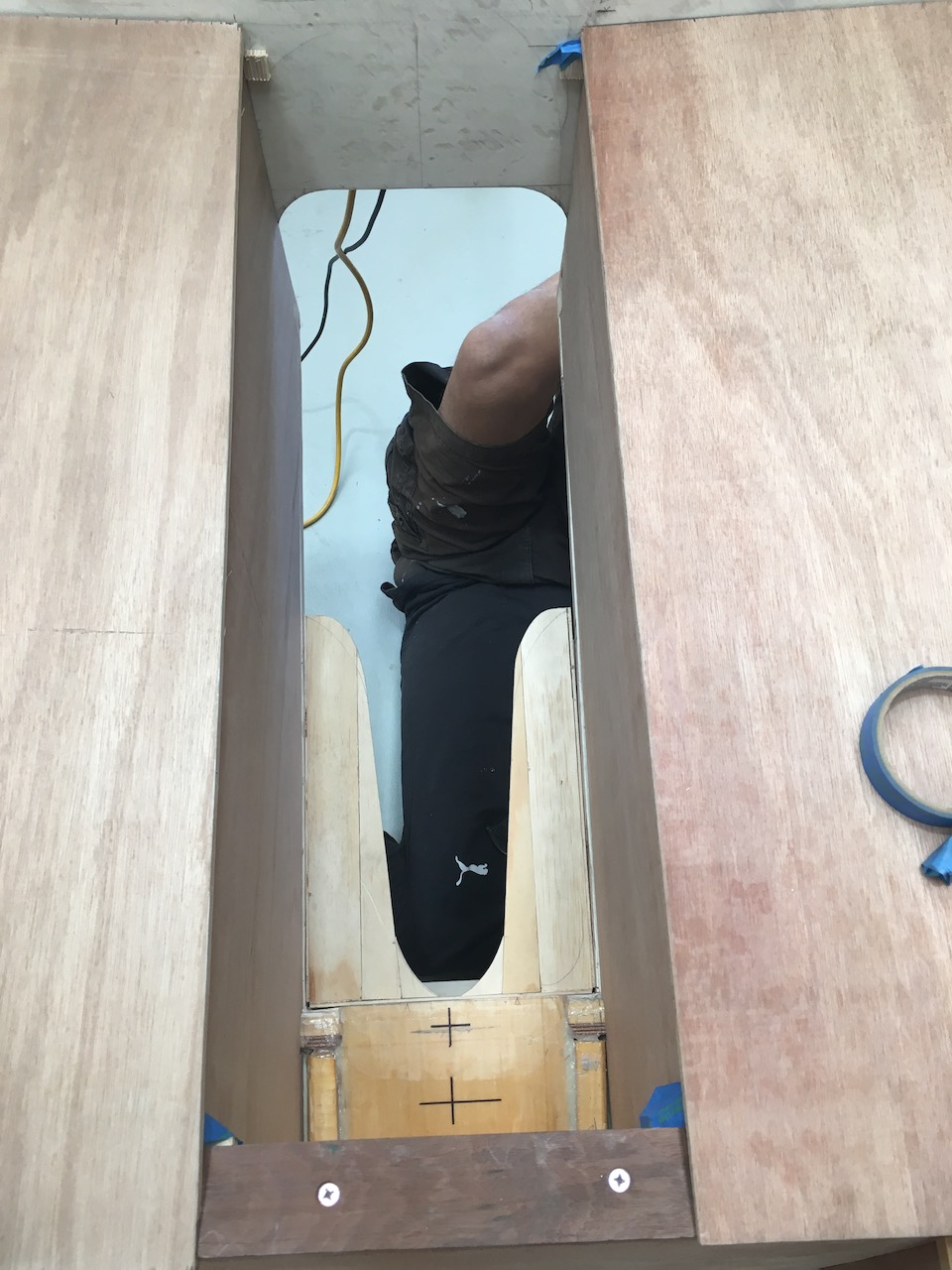
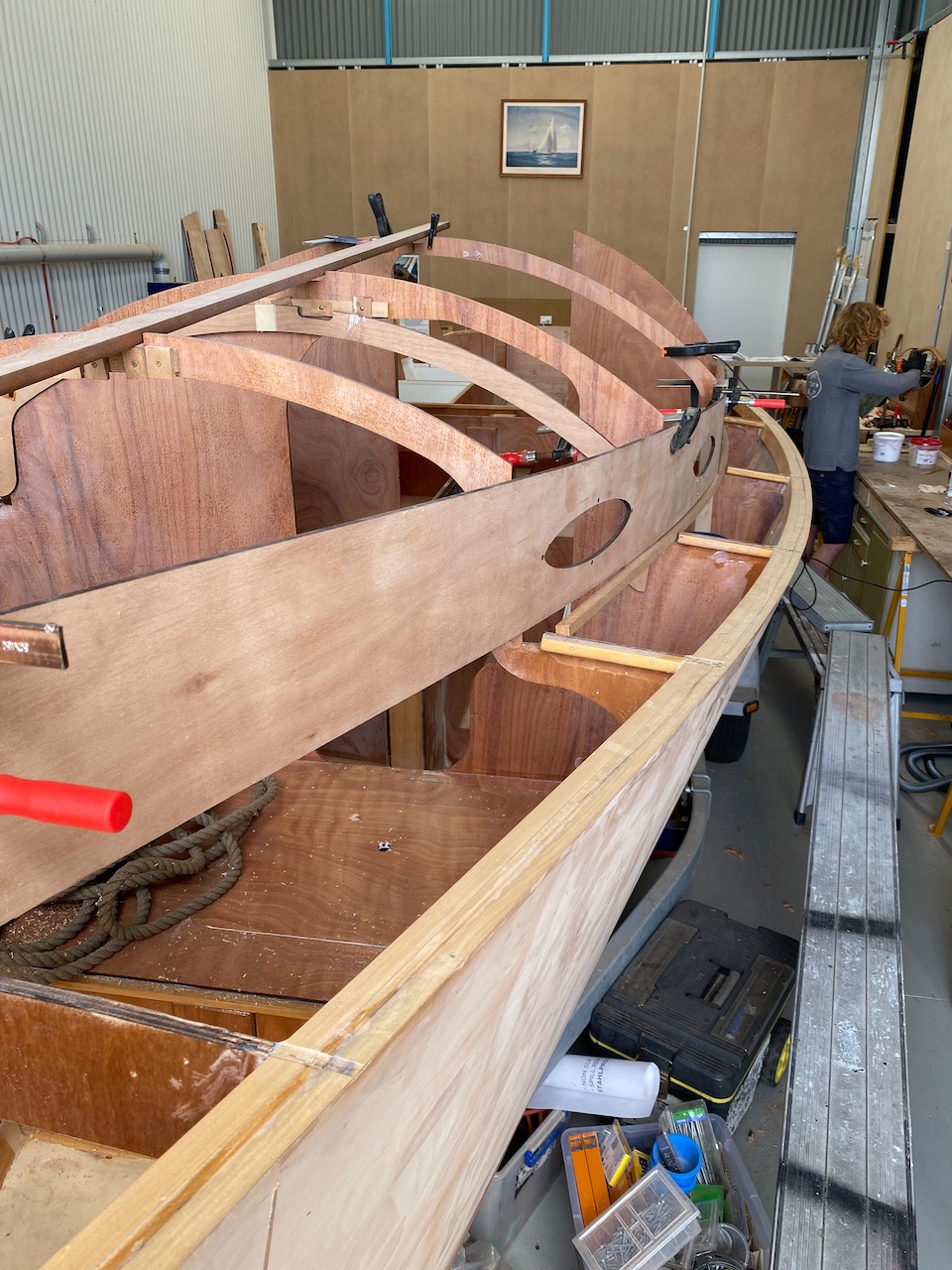
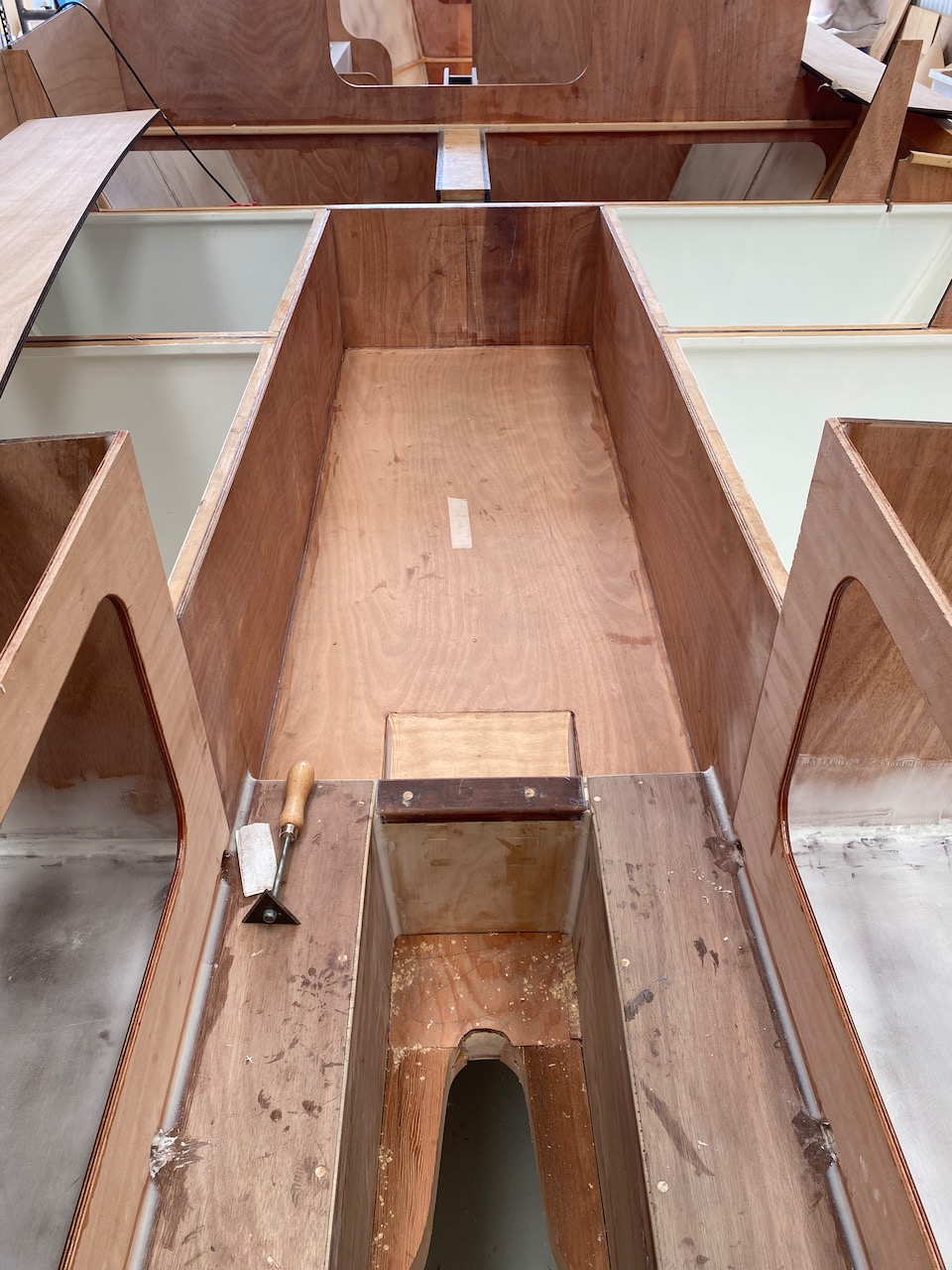
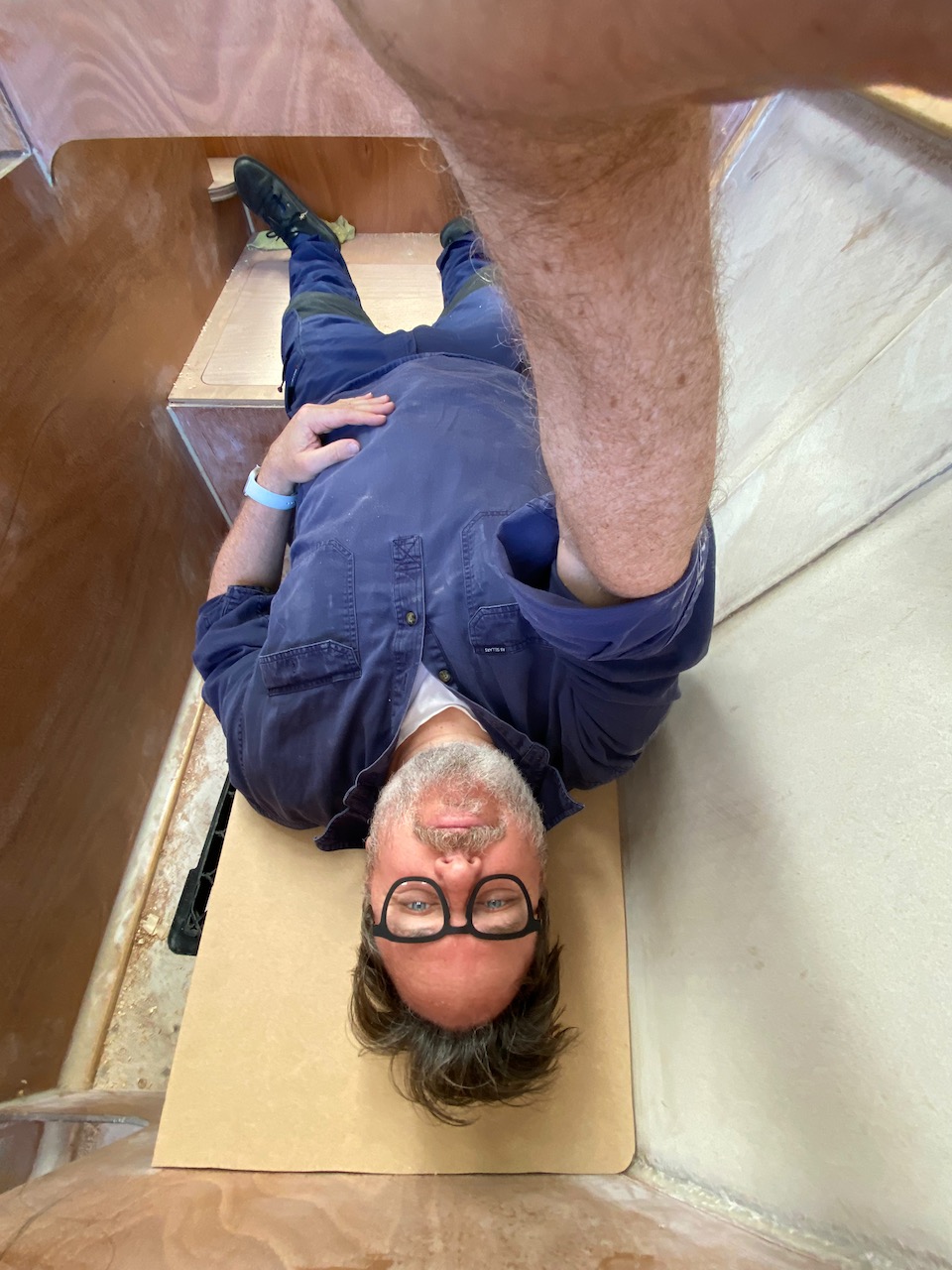
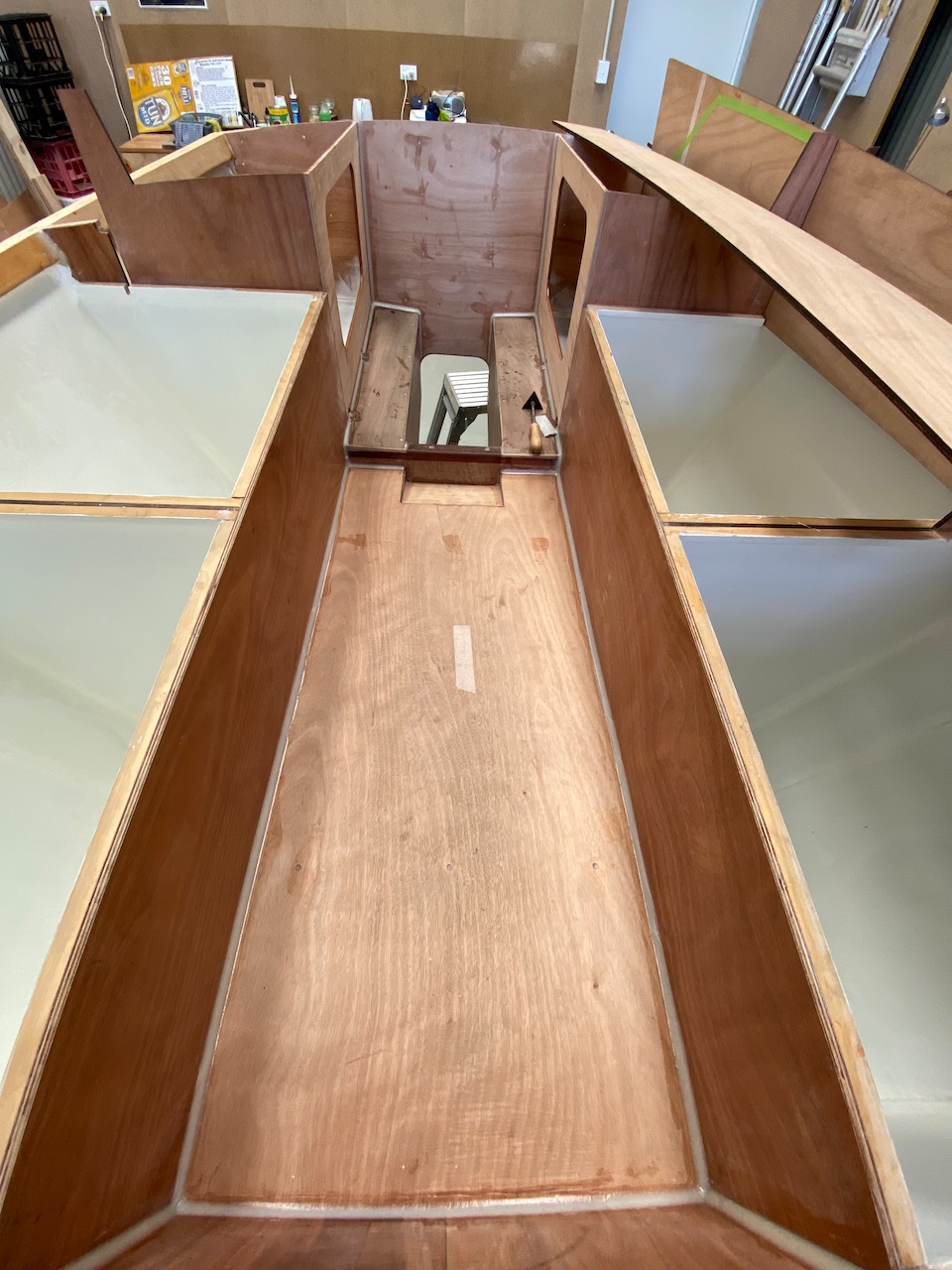

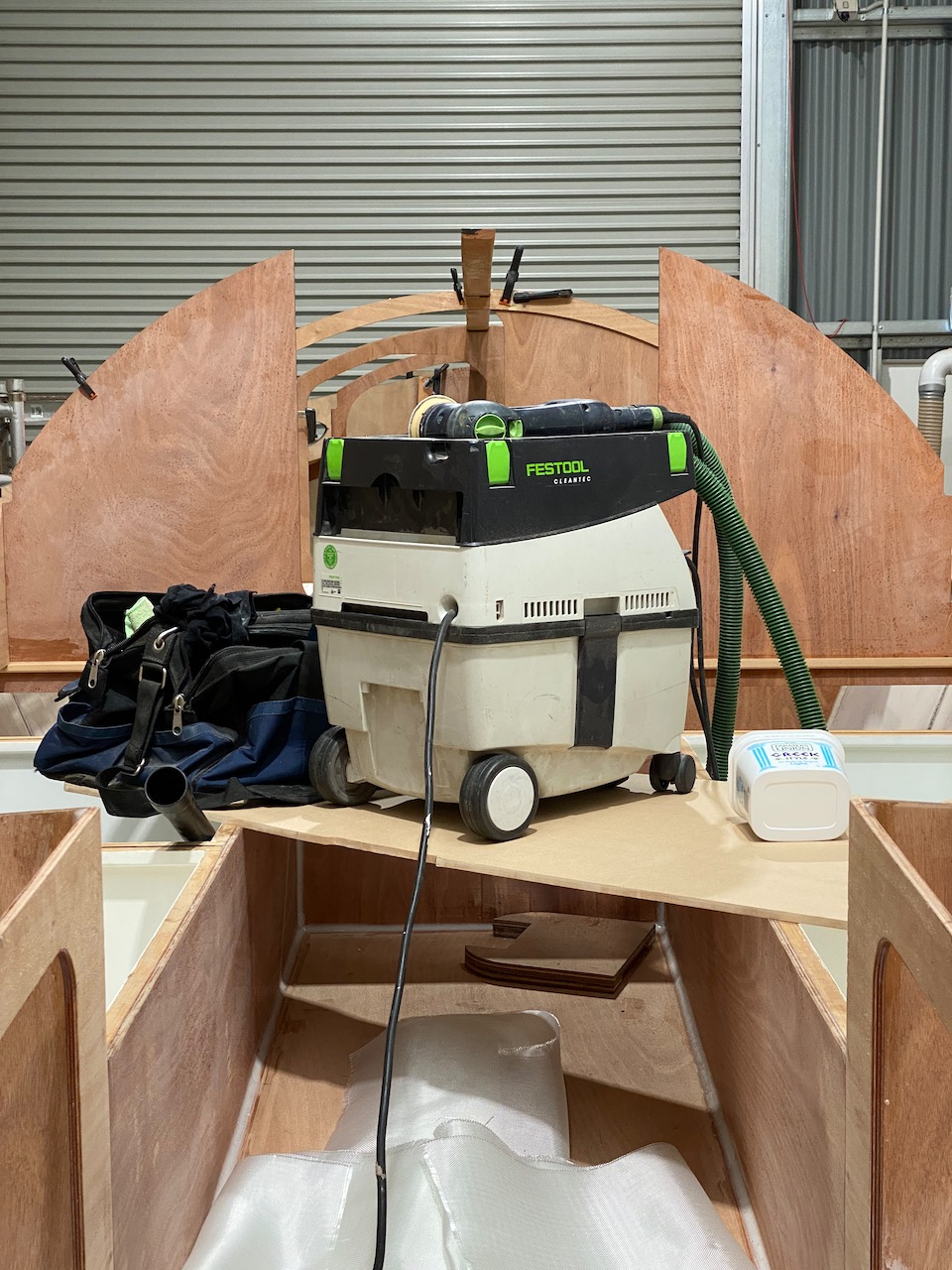


Update: I should have mentioned my wrist situation (as a bit of an excuse): things are improving, the stamina is limited, but recovery pain from use is mostly fading overnight without the need for painkillers. 🙂
